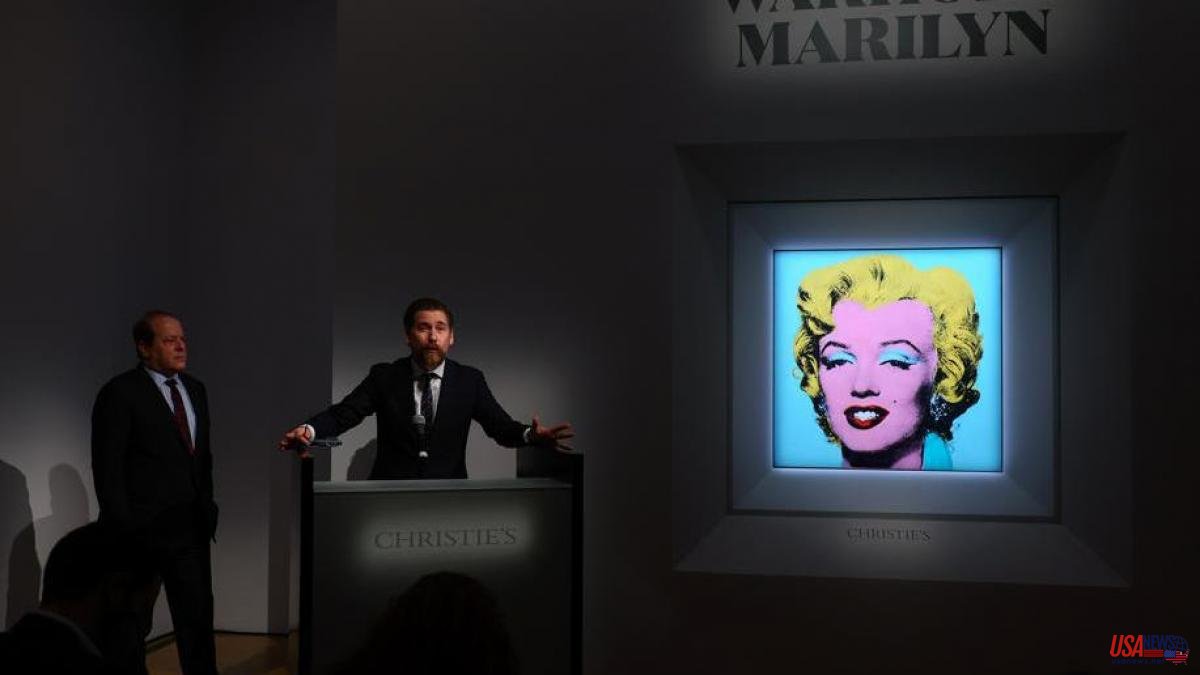Apparently oblivious to the economic context marked by the war in Ukraine, the energy crisis and galloping inflation, the art market has experienced an epic year, the best in its history, with stratospheric figures. The two main auction houses (Christie's and Sotheby's), which capture 80% of the market, broke their own records, with sales totaling 8,400 and 8,000 million dollars, respectively, to which must be added the 1,300 million obtained by Phillips . A simple sum yields the overwhelming figure of 17,800 million dollars, although according to calculations by the Financial Times s if we stick exclusively to the turnover for works of art (the two auction titans include luxury items or collector cars, for example) it would have to be lowered to 13,600 million, 12% more than in 2021.
"At first glance, it may surprise you that the best year in history took place in the midst of a global crisis, but it makes all the sense in the world," says collector and market analyst Lola Garrido. “The truly rich, those whose fortunes exceed the limits of reality, have grown by 21% and art, apart from whitening its status, is very easy to save, unlike what happens with money. It has been a very bad year for the stock market, which has lost between 40 and 50%, and that money that was there because there had been exponential gains, was withdrawn. What interest does it have to have it paralyzed at 0%? What do you do with it then? Much has gone to art. In Swiss customs alone there are more than one and a half million works stored, ”she argues.
But, beyond its refuge value and the games of millionaires who are no longer satisfied with having five houses and a private jet, and are willing to pay whatever it takes for a Richter or a Koons to endorse their status, the truth is it is that the market always has an appetite for rare, exceptional works, and 2022 has been especially generous. Starting with Andy Warhol's Marilyn Monroe portrait, which topped $195 million (the second-highest amount ever paid at auction after Leonardo's dubious Salvator Mundi sold for $450 million in 2017).
Or the collection of businessman and philanthropist Paul Allen, who raised $1.6 billion at Christie's. Undoubtedly the patina of the provenance of the works accounts for the buying joy of collectors, but in this case the set also contained names that are very difficult to find in private hands such as Georges Seurat (The models sold for almost 150 million dollars), Paul Cézanne (La montagne Sainte-Victoire, for 137.8 million) or Van Gogh (Orchard with cypresses, for 117.2 million).
The other big auction of the year, this time at Sotheby's, was that of the Macklowe couple's art collection – a condition to sign the papers of a stormy divorce – which raised 922.2 million dollars. The buyer's profile? 35% landed for the first time at auctions, that is, they were debuting in the world of collecting, and of these, 34% were millennials, those born between the years 1980 and 1990. They themselves spent another 110 million dollars in watches, jewelry, handbags, sneakers and wine.













